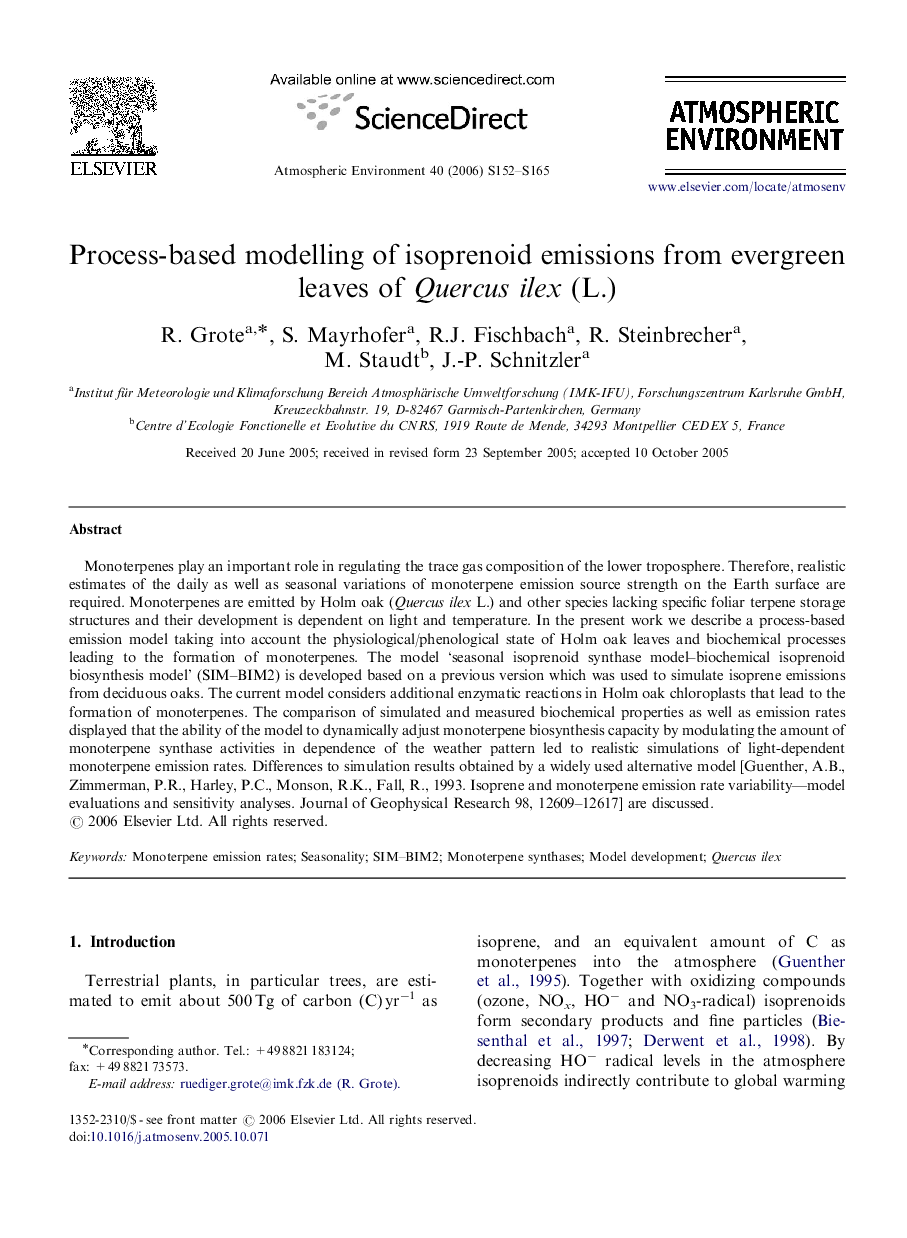| Article ID | Journal | Published Year | Pages | File Type |
|---|---|---|---|---|
| 4443899 | Atmospheric Environment | 2006 | 14 Pages |
Monoterpenes play an important role in regulating the trace gas composition of the lower troposphere. Therefore, realistic estimates of the daily as well as seasonal variations of monoterpene emission source strength on the Earth surface are required. Monoterpenes are emitted by Holm oak (Quercus ilex L.) and other species lacking specific foliar terpene storage structures and their development is dependent on light and temperature. In the present work we describe a process-based emission model taking into account the physiological/phenological state of Holm oak leaves and biochemical processes leading to the formation of monoterpenes. The model ‘seasonal isoprenoid synthase model–biochemical isoprenoid biosynthesis model’ (SIM–BIM2) is developed based on a previous version which was used to simulate isoprene emissions from deciduous oaks. The current model considers additional enzymatic reactions in Holm oak chloroplasts that lead to the formation of monoterpenes. The comparison of simulated and measured biochemical properties as well as emission rates displayed that the ability of the model to dynamically adjust monoterpene biosynthesis capacity by modulating the amount of monoterpene synthase activities in dependence of the weather pattern led to realistic simulations of light-dependent monoterpene emission rates. Differences to simulation results obtained by a widely used alternative model [Guenther, A.B., Zimmerman, P.R., Harley, P.C., Monson, R.K., Fall, R., 1993. Isoprene and monoterpene emission rate variability—model evaluations and sensitivity analyses. Journal of Geophysical Research 98, 12609–12617] are discussed.
